Test: Scott recently presented the new E-Spark with Shimano drive and a completely new frame. In Riva we had the opportunity to take the new Scott E-MTB to the fun trails of Lake Garda and to get some first riding impressions.
The Scott Spark is undoubtedly a fast, universal bike with a lot of propulsion but enough reserves for most trails and is well known to many bikers - not least because Nino Schurter won the gold medal in Rio in 2016 on that very bike. Two years ago, an e-version of the successful model was presented, at that time still with a Bosch drive and battery on the down tube. For the 2017 model year, the E-Spark is not only given a makeover, but everything is turned inside out and a completely new E-MTB is presented. New kinematics, plus tyres, Shimano E8000 drive and an overall somewhat more potent character are the key data of the new Scott E-Spark.
Scott E-Spark: Sporty universal - also thanks to TwinLoc
But before we get to the technical finesse of the new E-MTB in the Scott stable, we would like to say a few words about the character and orientation of the new E-Spark. What was the bike designed for? Where do the developers see the bike? With 130mm travel at the front and (maximum) 120mm at the rear, the E-Spark, like its non-motorized counterpart, is equipped with less travel. That doesn't mean, however, that you should shy away from off-road trips with the E-Spark - on the contrary!
With powerful plus tires and a sporty, modern geometry with a moderately slack steering angle and long main frame, the E-Spark is clearly positioned in the category of popular trail bikes. The chainstays deserve a special mention. At 445mm, they are very short for an E-MTB, keeping the Scott bike compact and avoiding the "semi-trailer feeling". In addition to a sophisticated frame construction in the bottom bracket area, this is also made possible by the extremely compact Shimano motor, which leaves the designers a little more room for the frame tubes.
Scott E Spark Geometry
| S | M | L | XL | |
| seat tube (in mm) | 400 | 440 | 490 | 540 |
| Top tube horizontal (in mm) | 580 | 610 | 640 | 660 |
| head tube (in mm) | 110 | 120 | 130 | 140 |
| chainstay (in mm) | 445 | 445 | 445 | 445 |
| Wheelbase (in mm) | 1142 | 1173 | 1204 | 1226 |
| Steering angle (in °) | 67.5 | 67.5 | 67.5 | 67.5 |
| Seat angle (in °) | 73.8 | 73.8 | 73.8 | 73.8 |
| Reach (mm) | 406 | 433 | 460 | 478 |
| Stacks (in mm) | 597 | 607 | 616 | 625 |
An elementary part of Scott's philosophy has been the Twin Loc system for years, which some of you may already be familiar with. A handlebar remote control controls the entire chassis - i.e. damper and fork - and gives the rider the choice between three riding modes: In climb mode, the fork and damper are fully locked and the bike is set up for maximum efficiency for long climbs. The 'medium' traction mode reduces the spring travel at the rear to 85mm with slightly tighter kinematics and activates platform damping on the fork. The happy medium for moderate terrain and a lot of propulsion. The completely open mode finally breaks the chains on the chassis and releases the entire suspension travel - for the rough stuff. Overall, the rear kinematics were designed in such a way that you get a plush feeling for a lot of traction even with light impacts up to the sag point. After that, the characteristic curve becomes progressively more progressive, so that the chassis remains active even in tough off-road gears and does not reach its limits.
Scott E-Spark: System integration at the highest level
Scott is particularly proud of the system integration on the new E-Spark, which offers more than just visual advantages. But of course, at first glance, the very clean appearance for an E-MTB catches the eye. The main reason for this is the 500Wh battery integrated into the down tube. A secure locking mechanism from Abus and the down tube, which has been optimized down to the last detail, keep the battery securely in place. Even on heavier trails, there should be no rattling or shaking. Protective covers ensure that the battery can only smile wearily over high-flying stones, and the even weight distribution has a positive effect on handling.
Space has also been created in the down tube for all cables and lines - here too, of course, this initially has a positive effect on the optics, but they are also much better protected there from the weather and there is no risk of breakage or tearing in the event of a fall. In addition to the integration of the battery, the motor itself always poses major challenges for the designers: on the one hand, the drive unit must be well protected, but must not get too hot and should remain as compact as possible to create space for the damper, crank and any bearings. This is where the advantages of the new Shimano E-8000 drive come into play, which is significantly more compact than the competition from Bosch, for example.
A total of three engine covers are used on the E-Spark: All cables are integrated on the left side and ventilation ducts are located here as well as on the right side. The underside is particularly reinforced so that the motor is not damaged even if it hits the ground. In any case, Scott has placed a lot of value on details: For example, the speed sensor of the Shimano drive is located in the lock ring of the rear brake disc and the Syncros FL 1.0 carbon handlebar offers the option of routing the cables for the drive inside.
Scott E-Spark: First driving impressions
At the bike festival in Riva we were able to take the new Scott E-Spark for a short test ride on the varied trails around Lake Garda. What first catches the eye, apart from the good looks, is the sporty geometry with a long reach and short struts. While in the past you often had to make compromises with e-MTBs due to the large motor, long struts and corresponding wheelbase, the geometry table of the e-Spark could also come from a non-e-bike. The seating position is nice and central, the short, wide cockpit suits it well and the steering angle, which is not too slack, keeps the bike responsive.
We were on the road with the almost 7.000 € expensive top model of the series, which with Fox Factory suspension, transfer support and Shimano XT Di2 gears should really leave nothing to be desired in terms of equipment. With a little more than 22kg, it is also quite light for an E-Fully. We found the interaction between the Di2 circuit and the E8000 drive particularly successful: Two identical triggers are used – the rear derailleur is operated on the right, and the drive’s support modes are changed on the left. At first you have to sort your fingers on the handlebars: With two triggers, remote for the dropper post, TwinLoc, brakes and the good display on the side of the stem, there really isn't much room left. If you also mount a bike computer, it gets a bit confusing.
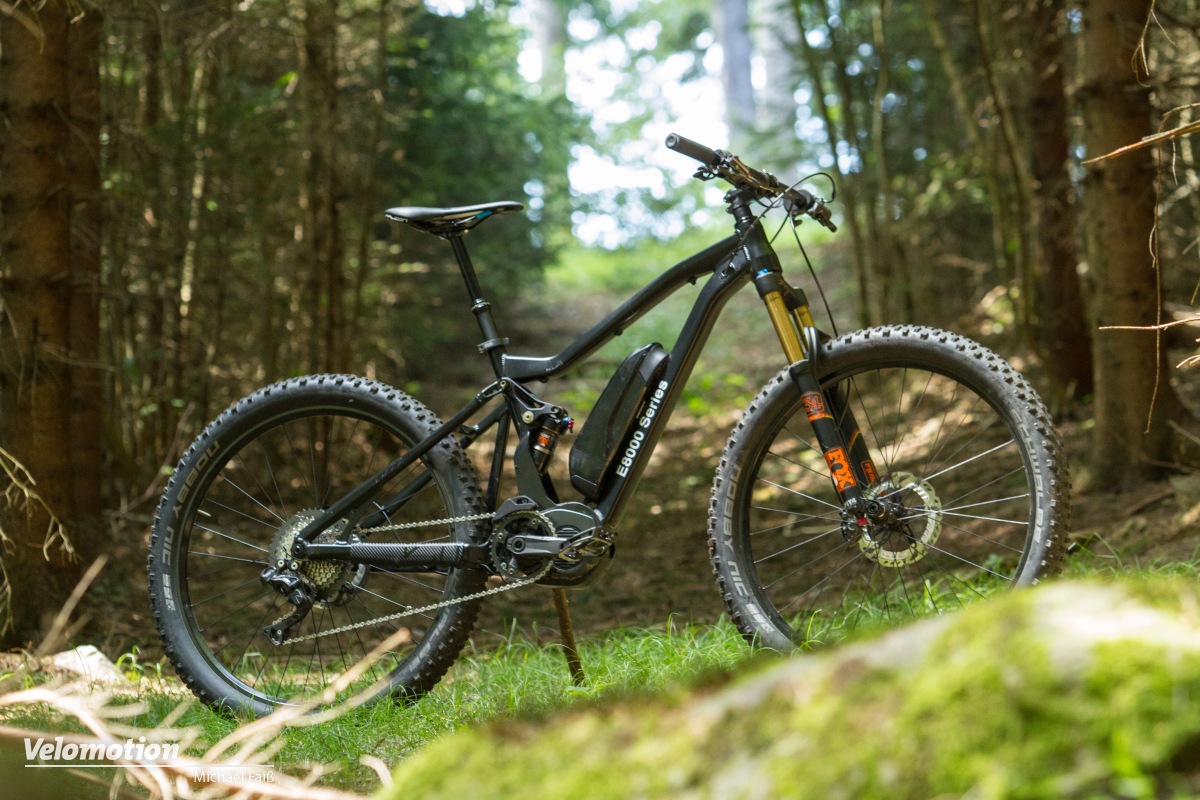
E-bikes: Test: Shimano STEPS E-8000 - the new E-MTB drive from Shimano in the first test
Test: We recently had the great opportunity to test ride the brand new Shimano Steps E-8000 E-MTB drive at home. The first models with the successor to the E-2014 that appeared in 6000 should probably be expected in early 2017. E-MTB fans can already look forward to it; As our test showed, the drive not only impresses with its small dimensions and […]
In combination with the plus tires from Maxxis, the chassis conveys the feeling of sitting on a bike with significantly more suspension travel. Especially in the open mode, the E-Spark literally sticks to the ground and soaks up the rough ground of the typical Lake Garda trails with a quick reaction and conveys a lot of security. In Traction mode you get a little more liveliness and noticeably more feedback from the trail - the E-Spark also climbs a little better than it already does. Most of the time we were out and about in the very successful Trail mode of the Shimano drive, which dynamically adjusts the support performance depending on the pressure on the pedal and a few other factors. This gives you a dynamic, very natural riding experience and you quickly forget that you are actually sitting on an e-bike.
If you're going uphill, you're spoiled for choice between the three suspension modes provided by the TwinLoc on the handlebars. On the technical climbs, we were mostly in traction mode here, but we also liked to be completely open on rougher sections; The new remote is nice, with which the modes can be changed quickly while driving. We see the climb mode primarily for longer climbs on gravel or asphalt. Rocky steps, washed-out gullies, steep ramps: the terrain on Lake Garda is demanding, especially when you suddenly ride the trails in the opposite direction - namely up! This works excellently with the E-Spark and makes a lot of fun. However, caution is advised in the event of oncoming traffic. By the way: Anyone who has climbed such a technical trail with an e-MTB will never again claim that riding an e-bike is not a sport and not strenuous...
Scott E-Spark: models, prices and weights
In addition to the three E-Spark variants 700 Plus Tuned, 710 Plus and 720 Plus, Scott also offers a women-specific E-MTB with the E-Contessa variant - unfortunately still a real rarity on the market. All bikes have the Shimano E-8000 drive, the 500Wh battery and the TwinLoc system in common.
Circuit: Shimano XT Di2
suspension fork: FOX 34 Float Factory
Mute: FOX Nude Trunnion
brakes: Shimano XT
Seat post: FOX TransferFactory
Weight: 22,1kg
Price: € 6.999
Circuit: Shimano XT
suspension fork: FOX 34 Float Performance Elite
Mute: FOX Nude Trunnion
brakes: Shimano XT
Seat post: FOX Transfer Performance
Weight: 22,2kg
Price: € 5.799
Circuit: Shimano SLX
suspension fork: RockShox Sector RL
Mute: X-Fusion Nude Trunnion
brakes: Shimano Deore
Seat post: Syncros 31.6mm
Weight: 22,4kg
Price: € 4.599

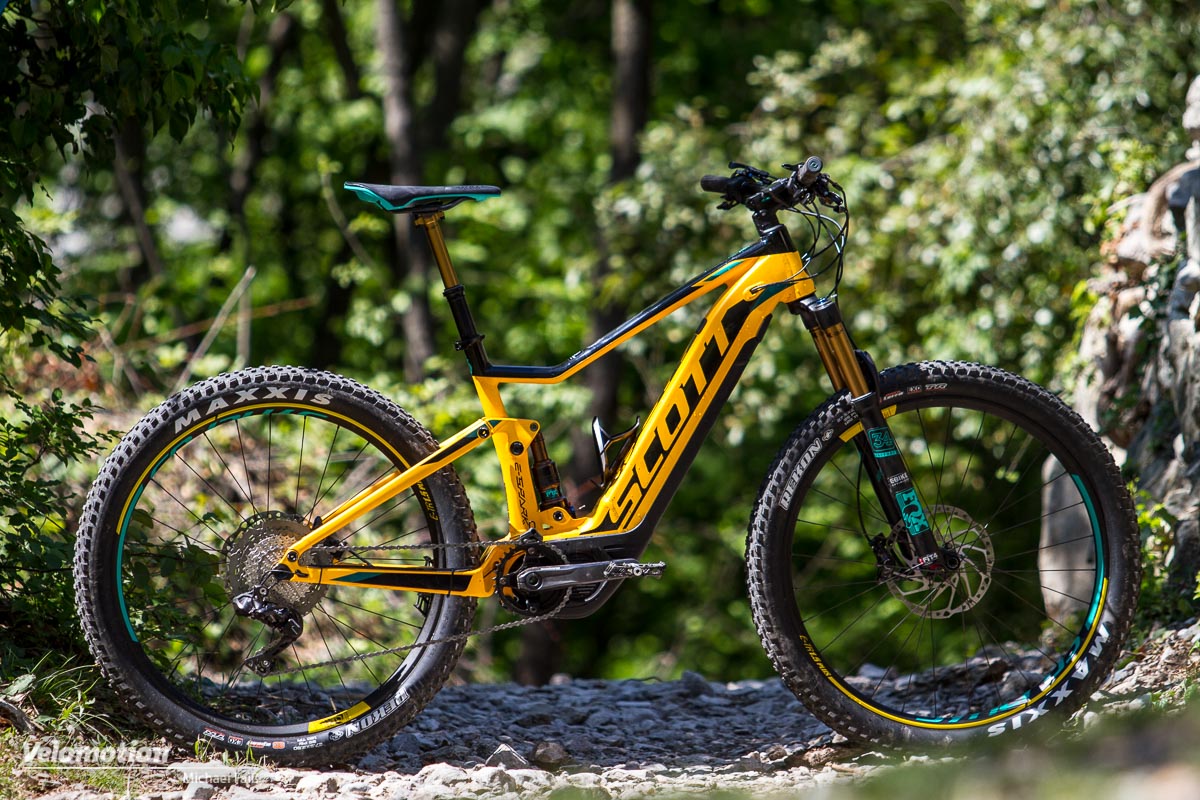



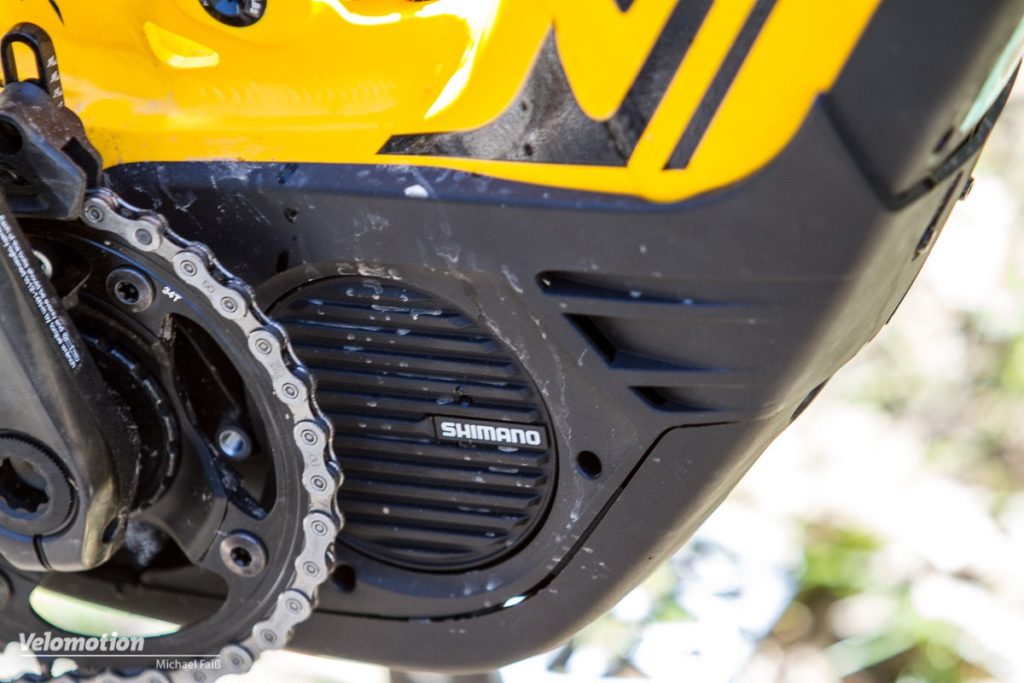
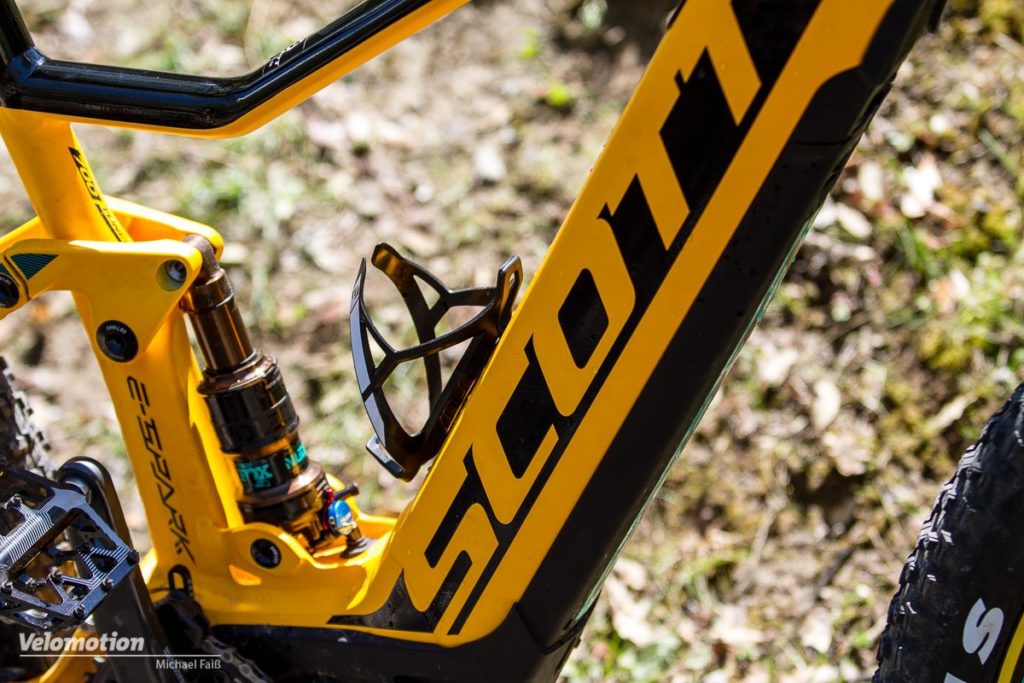







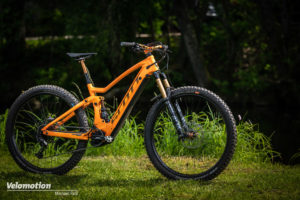







Leave a Comment